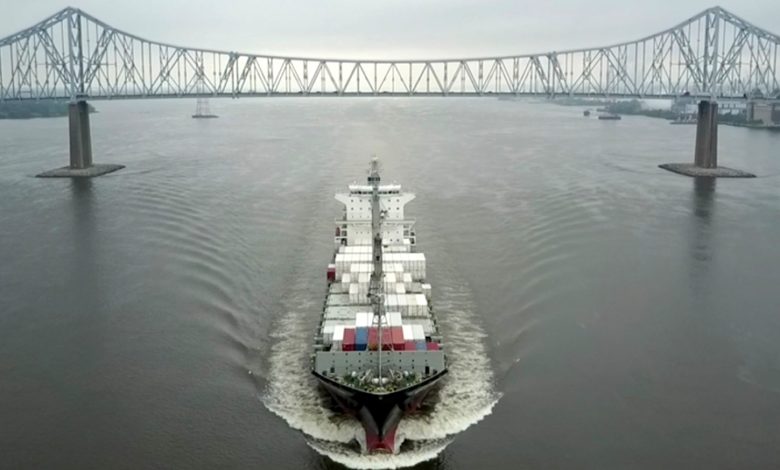Lomar to install carbon capture device on boxship next month

Lomar’s new subsidiary lomarlabs is working with London-based climate tech start-up Seabound to develop cost-effective methods to capture CO2 onboard vessels.
Lomarlabs works with entrepreneurs who bring deep tech solutions to the maritime industry and helps them de-risk their technologies and optimise their business models. This venture is spearheaded by former Lomar technical director Stylianos Papageorgiou, who has been appointed its managing director.
Seabound has developed a patent-pending compact carbon capture device that can be retrofitted into a ship’s engine exhaust at the funnel. The CO2 chemically reacts with pebbles of quicklime, which then convert into limestone, keeping the CO2 locked in. The limestone pebbles are temporarily stored onboard before the ship returns to port, without any need for energy-intensive CO2 separation, compression, or liquefaction. The pebbles are safe, inert and non-toxic; abundantly available worldwide and reasonably priced. Once back in port, the limestone pebbles are offloaded and either sold in pure form or turned back into quicklime and CO2, for the quicklime to be reused onboard another vessel and the CO2 sold for utilisation or sequestration.
Preparations to install this equipment onboard the first ship will take place in May and June this year to run the first-ever pilot project throughout this summer.
This project is part of the Clean Maritime Demonstration Competition Round 3 (CMDC3), which was announced in September 2022, funded by the UK Department for Transport and delivered in partnership with Innovate UK.
Idan Ofer’s Eastern Pacific, which has its own start-up subsidiary, has also invested in Seabound.
Other container shipowners are readying their own carbon capture plans. Splash reported news from South Korea yesterday where flagship carrier HMM announced plans to conduct field tests this year of an onboard carbon capture system for containerships along with compatriots Samsung Heavy Industries and Panasia, a scrubber manufacturer which has latterly developed carbon capture technology.

Should this have been an April 1st item?
Quicklime is produced by heating calcium carbonate to drive off carbon dioxide. The quicklime reverts to calcium carbonate on absorbing carbon dioxide.
No net capture of carbon dioxide is taking place here. Instead the ship’s emissions are the same and are actually increased by the fuel burned to reduce the chalk to quicklime.
Pure greenwash. Lomar take the world for fools.
Net CO2 is captured only if the CO2 driven off the limestone back in port Is compressed, liquified, and sequestered, using that abundant supply of non-emitting energy promised to be just around the corner, but the kilns are usually powered with natural gas to make them hot enough. (This has been the fly in the ointment for carbon capture so far: the non-suitability of electricity for parts of the process.)
The article says the CO2 can, alternatively, be utilized for another purpose. Obviously only if the said purpose does not release it back into the atmosphere, so making seltzer water is out. :-). There is talk of making very expensive green fuel through reverse combustion which of course requires a large input of still more energy and fancy catalysts. If the CO2 can’t be sold it will have to be funded out of taxes.
There’s an old rule in health care financing. It’s a lot easier to shift costs to someone else than it is to reduce them. Same is likely true for CO2.